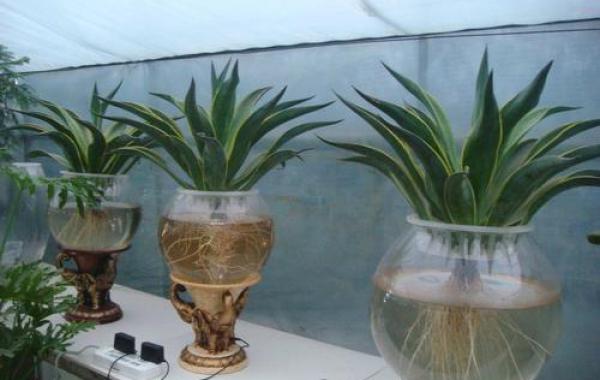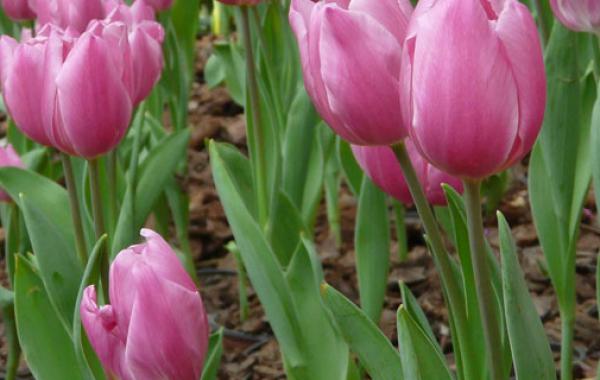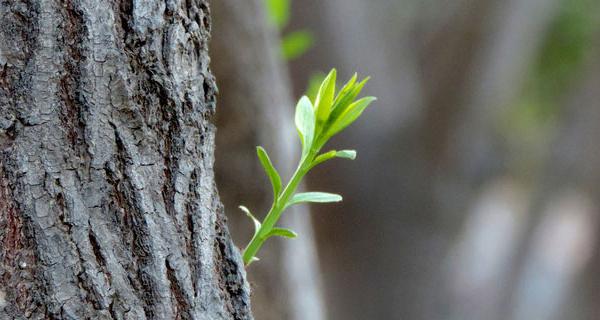How to use water for hydroponic flowers

What are hydroponic flowers?
A new culture method, water culture, has been developed in recent years. That is, using clear water instead of soil, growing flowers in glass or plastic utensils (bottles, cups, pots or boxes, etc.) with a certain degree of transparency. This method of cultivating flowers not only simplifies the management method, but also keeps the indoor clean and hygienic, and will not pollute the environment. If you plant flowers in the clear and transparent water, you can also observe the rooting, growth and development of ornamental plants in time. Most of the common ornamental plants suitable for hydroponic culture are foliage plants, such as Araceae, Rabdosia angustifolia, Liliaceae and Sedum. Mainly: synthetic taro, tortoise back bamboo, mini tortoise back bamboo, ivy, green apple, Guangdong evergreen, golden queen, silver emperor, Daifen, zebra evergreen, multi-flowered taro, fire crane, calla lily, hulk, green emperor, ruby happy forest taro, sea taro, duck toe grass, aloe, 12 rolls, tiger tail orchid, tequila, hanging orchid, rich bamboo, lotus cactus, cactus, purple velvet, dry umbrella grass, colored leaf grass, lotus cactus Bamboo crabapple, kidney fern, bird's nest fern, brown bamboo and pocket coconut.
Advantages and disadvantages of hydroponic flowers.
Advantages of hydroponic flowers:
First, there is a strong ornamental, can watch the leaves, flowers and roots at the same time. It has more three-dimensional viewing value.
Second: convenient management, do not often worry about watering, afraid of watering too wet cause rotten roots and die.
Third: fertilizing quickly only need to drop the nutrient solution according to the amount, there is no need to hurt the brain for the sake of fertilizer, and worry about fertilizer damage caused by excessive fertilization.
Four: no need to worry about the infection of diseases and insect pests in the soil, just keep the basin water clean.
Five: elegant furnishings, offices, conference rooms, bedrooms to the outside can see its figure, there is a trend to expand the popularity.
Disadvantages of hydroponic flower culture:
One: the lack of nutrients, it is only made in the supplement of nutrient solution, can not be like soil-grown flowers with a more complete source of nutrients. It is prone to some nutrient deficiency.
Second: the trouble of changing and washing, it takes 5-7 days to change the water or clean the container, the bottle of water is easy to grow clear moss and affect the beauty of appearance.
Third: it is easy to be blown down by the wind. It is not as strong and stable as native flowers.
Fourth: fear of the sun can easily cause water loss after the sun, resulting in scorched leaves and withered.
Hydroponic flowers are all or most of the plants immersed in water. Its watering method:
(1) Water quality treatment and selection. Lake water, river water, well water, Rain Water, 24-hour tap water are available. Preferably acidic water after electrolysis. Avoid using mineral water.
(2) watering water. The surface of the water touches the upper 3 cm of the root, do not immerse too much, lest the rotten root affect breathing.
(3) rehydration time. Change the water every 2 days in summer and 10 days in winter, and drop 4-5 drops of nutrient solution into the water.
(4) hydroponic culture time. Try to choose to start hydroponic conservation in spring and autumn, the effect is better.
Note: several colored glass balls or pebbles can be put in the bottle to stabilize the center of gravity and increase the beauty of the bottle.
Flower water culture
What are the cultivation methods of hydroponic flowers
1. Nutrient liquid film cultivation is also known as NFT cultivation. This method uses a shallow nutrient solution of 0.5cm to flow through the roots of flowers and plants. Because the nutrient solution is very shallow like a water film, it is called nutrient liquid film cultivation technology.
two。 In the way of deep liquid flowing water culture, the liquid layer of the nutrient solution is deeper, the flowers are suspended on the liquid surface, its weight is carried by the planting net frame or planting plate, and the root system hangs into the nutrient solution. Deep liquid flow technology can be divided into dynamic floating root method, M type, floating plate capillary method and so on.
3. The root system of aerosol culture is suspended in the inner space of the container, and the nutrient solution is sprayed directly to the flower root system by spraying.
4. Vase seedling cultivation refers to the method of cutting a stem or branch from the mother plant and inserting the stem into the water to take root, thus forming a new hydroponic flower. This method is suitable for families and individuals to cultivate hydroponic flowers.
5. The selection of soil culture flowers from soil culture to water culture has ornamental value and grows healthily. The formed flowers in soil cultivation (or other medium cultivation) are removed from the soil, washed their roots and changed to water culture. When cleaning the root, it is best to use running water to reduce the damage to the root, and it is easy to clean. After washing, the flowers are planted in prepared utensils and injected with water that does not pass the root system 2, 3, 3, 1, and 2. Initially change the water once a day, wash the roots and utensils at the same time, and reduce the number of water changes after a week. After the cultivated flowers grow new roots in the water to adapt to the hydroponic environment, they can change the water every 7 to 10 days or even longer. This method is suitable for the cultivation of hydroponic flowers in families, offices, hotels and other places.
How to cultivate flowers in water
It is important to choose the appropriate water insertion time, because the water insertion requires the appropriate temperature. The suitable temperature of hydroponic culture is 20-25 ℃. It usually takes place in late spring and early autumn, and it is not appropriate to be too early or too late. Because the water insertion wound is not easy to heal when the temperature is low, when the temperature is too high, most flowers are dormant or semi-dormant, and the water is easy to deteriorate, easy to cause incision decay, not easy to survive. When hydroponic culture, it is appropriate to choose strong twigs without diseases and insect pests. When inserting water according to the required length of cuttings, cut off about 0.5 cm below the stem node of the branch with a sharp and clean knife (or scissors), then cut off some of the leaves inserted into the water and insert them directly into a bottle or cup containing fresh water. The depth at which the branch is inserted into the water is usually at the 1 / 3 or 1 / 4 of the cuttings.
Related
- What if the leaves of potted flowers turn yellow?
- Florescence Control of several Flowers
- Anti-freezing technology and post-freezing nursing technology of flowers
- What is the classification of flowers? What are the common methods of flower classification?
- Prevention and control of alkali and acid damage of flowers in courtyard
- Technology of Anti-freezing and restoring growth of Flower seedlings in greenhouse and greenhouse
- How does flower fertilization not hurt the root? Fertilization technology of flowers
- Key points of disinfection in flower greenhouse
- Several pesticides that are banned or used cautiously in flowers
- How to fertilize the flowers that watch the leaves?



